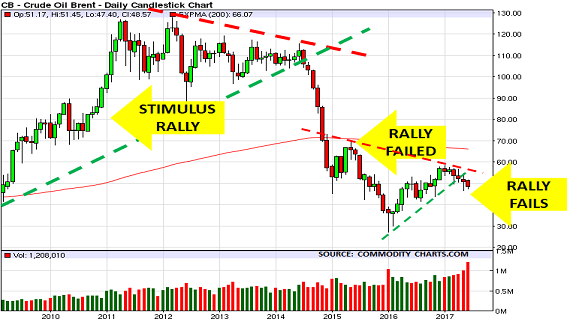
Oil markets have been at the center of the recent myth that economic recovery was finally underway. The theory was that rising inflation, caused by rising oil prices, meant consumer demand was increasing. In turn, this meant that the central banks had finally achieved their aim of restoring economic growth via their zero interest rate policy.
This theory was first undermined in 2014 when oil prices began their fall. There had never been a shortage of oil. Prices rose to $125/bbl simply because the hedge funds saw commodities like oil as a ‘store of value’ against the Federal Reserve’s policy of weakening the dollar.
The theory sounded attractive and plenty of people had initially made a lot of money from believing it. But it didn’t mean that the global economy had recovered. And by August 2014, as I highlighted at the time, oil prices were starting to collapse under the weight of excess supply. As I also suggested in the same post, this meant “major oil price volatility is now likely”. By luck or judgment, this has indeed since occurred, as the chart shows:
In reality, as I discussed last month, this final rally merely enabled new US production to be financed. The US oil rig count has doubled over the past year, and each rig is now 3x more productive than in 2014. At the same time, the medium-term outlook for oil demand in the key transport sector is becoming more doubtful, with China and India both now moving towards Electric Vehicles as a way of reducing their high levels of air pollution.













Leave A Comment